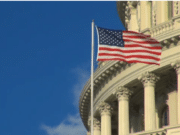THINK OF THE upper echelons of the money-management business, and the image that springs to mind is of fusty private banks in Geneva or London’s Mayfair, with marble lobbies and fake country-house meeting-rooms designed to make their super-rich clients feel at home. But that picture is out of date. A more accurate one would feature hundreds of glassy private offices in California and Singapore that invest in Canadian bonds, European property and Chinese startups—and whose gilded patrons are sleepwalking into a political storm.
Global finance is being transformed as billionaires get richer and cut out the middlemen by creating their own “family offices”, personal investment firms that roam global markets looking for opportunities. Largely unnoticed, family offices have become a force in investing, with up to $4trn of assets—more than hedge funds and equivalent to 6% of the value of the world’s stockmarkets. As they grow even bigger in an era of populism, family offices are destined to face uncomfortable questions about how they concentrate power and feed inequality.
The concept is hardly new; John D. Rockefeller set up his family office in 1882. But the number has exploded this century. Somewhere between 5,000 and 10,000 are based in America and Europe and in Asian hubs such as Singapore and Hong Kong. Though their main task is to manage financial assets, the biggest offices, some with hundreds of staff, undertake all sorts of other chores, from tax and legal work to acting as high-powered butlers who book jets and pamper pets.
The costs of bringing such expertise in-mansion means that they generally make sense only for those worth over $100m, the top 0.001% of the global pile. Asian tycoons such as Jack Ma of Alibaba have created their own fiefs. The largest Western family offices, such as the one set up by George Soros, an investor and philanthropist, oversee tens of billions and are as muscular as Wall Street firms, competing with banks and private-equity groups to buy whole companies.
Every investment boom reflects the society that spawned it. The humble mutual fund came of age in the 1970s after two decades of middle-class prosperity in America. The rise of family offices reflects soaring inequality. Since 1980 the share of the world’s wealth owned by the top 0.01% has risen from 3% to 8%. As the founders of family firms receive dividends or the proceeds of initial public offerings, they usually redeploy the cash. But since the financial crisis there has been a loss of faith in external money managers. Rich clients have taken a closer look at private banks’ high fees and murky incentives, and balked.
These trends are unlikely to fade, as our Briefing explains. The number of billionaires is still growing—199 newbies made the grade last year. In the emerging world older entrepreneurs who created firms in the boom years after 1990 are preparing to cash out, while in America and China younger tech entrepreneurs may soon float their companies, releasing a new wave of cash to reinvest. Family offices’ weight in the financial system, therefore, looks likely to rise further. As it does, the objections to them will rise exponentially. The most obvious of these is the least convincing—that family offices have created inequality. They are a consequence, not its cause. Nonetheless, there are concerns—and one in particular that is worth worrying about.
The first is that family offices could endanger the stability of the financial system. Combining very rich people, opacity and markets can be explosive. LTCM, a $100bn hedge fund backed by the super-rich, blew up in 1998, almost bringing down Wall Street. Scores of wealthy people fell for a Ponzi scheme run by Bernie Madoff that collapsed in 2008. Still, as things stand family offices do not look like the next disaster waiting to happen. They have debt equivalent to 17% of their assets, making them among the least leveraged participants in global markets. On balance, they may even be a stabilising influence. Their funds are usually deployed for decades, making them far less vulnerable to panics than banks and many hedge funds.
The second worry is that family offices could magnify the power of the wealthy over the economy. This is possible: were Bill Gates to invest exclusively in Turkey, he would own 65% of its stockmarket. But the aim is usually to diversify risk, not concentrate power, by taking capital from the original family business and putting it into a widely spread portfolio. The family-office industry is less concentrated than mainstream asset management, which a few firms such as BlackRock dominate. Compared with most fund managers, family offices have welcome habits, including a longer-term horizon and an appetite for startups.
It is the third danger that has most bite: that family offices might have privileged access to information, deals and tax schemes, allowing them to outperform ordinary investors. So far there is little evidence for this. The average family office returned 16% in 2017 and 7% in 2016, according to Campden Wealth, a research firm, slightly lagging behind world stockmarkets. Nonetheless, tycoons are well connected. Family offices are becoming more complex—a third have at least two branches—making tax wheezes easier. Hungry brokers and banks are rolling out the red carpet and pitching deals with unlisted firms that are not available to ordinary investors. If all this did lead to an entrenched, unfair advantage, the effect, when compounded over decades, would make wealth inequality disastrously worse.
The rich discover do-it-yourself
The answer is vigilance and light. Most regulators, treasuries and tax authorities are beginners when it comes to dealing with family offices, but they need to ensure that rules on insider trading, the equal servicing of clients by dealers and parity of tax treatment are observed. And they should prod family offices with assets of over, say, $10bn to publish accounts detailing their workings. In a world that is suspicious of privilege, big family offices have an interest in boosting transparency. In return, they should be free to operate unmolested. They may even have something to teach hordes of flailing asset managers who serve ordinary investors, many of whom may look at their monthly fees and wish that they, too, could ditch the middlemen.











